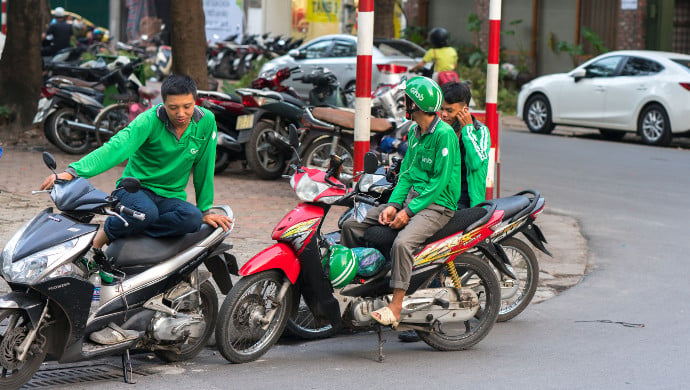When Anthony Tan became a delivery man, he found lots of little problems, but ignored Grab’s fundamental issue

Over the past two weeks, customers who ordered food via Grab stood a chance (albeit very small) of finding themselves in a face-to-face meeting with CEO Anthony Tan.
In an effort to better understand how the GrabFood delivery system works, Tan spent two weeks working as a courier in Singapore and Jakarta. In a post on LinkedIn, Tan said he found the experience useful in discovering pain points, which the company will work to fix.
He wrote:
“Wow – it’s not easy at all! Figuring out where to park the motorcycle or e-scooter, finding the restaurant and the delivery address, bridging communication between customers and the merchants when their chosen items were sold out … it was a workout and an eye-opening experience!”
It is all well and good to spend time at the lower rungs of your company to understand inefficiencies, but the post fundamentally misunderstands why being a Grab driver is hard.
It’s not hard because of annoying logistics, it’s not hard because of upset customers, it’s not hard because it’s a “workout”.
Working as a Grab driver is hard because it places a huge financial burden on the contract worker.
Also Read: Indonesian tax solution platform OnlinePajak secures Series B funding from Warburg Pincus
We have all taken a Grab ride with a driver who has pulled a long shift for six straight days because he or she has two kids at home. These insane hours are the only way this person can put food on the table and pay their mortgage. Such a punishing schedule eliminates their ability to actually spend time with the kids they are working so hard to support — a scenario low-wage workers typically face.
In March, a Singaporean Grab driver broke down what seems like a fair estimation of what a driver can expect to take home. If they work for 9 hours per day, every day, they can expect to make S$4000 (US$2900) per month. This monthly salary is not terrible in Singapore, many people make far less, but it also comes without insurance, retirement savings or bonuses.
Plus, if they are sick or injured, they don’t get paid.
S$4000 a month is a decent living for a single person willing to split an apartment with roommates or live with their family. For a bread winner that may have two kids at home, it’s a financially untenable position. They are working over 60 hours a week to barely scrape by.
This kind of financial instability often leads to domestic disputes, increased stress and a sense of depression because — and this is a terrible part of being poor — it never goes away.
Now, this is not unique to Grab. Actually, it is the standard operating procedure for the gig economy. It’s the pact we have all signed: our on-demand convenience is financed by companies whose only way to survive is to pay its delivery people the bare minimum for survival.
The gig economy is a fundamentally exploitative business model, and coming to grips with this fact will be a unique challenge over the next few years. Some smaller companies are doing their best to pay their workers a fair wage but the big boys are built on cheap labour.
This is why the Anthony Tan’s LinkedIn post was so disheartening. It treated “courier-partners” as if they are enthusiastic employees working to build a great company. In reality, they are more often a person who really needs money and view companies like Grab as band-aid solution to pay next month’s rent.
While Amazon has a lot of problems, earlier this month they bowed to public pressure and raised their corporate minimum wage to US$15 an hour. That is the type of move that actually fixes problems, and makes it so employees can see their kids or quit that second job that keeps them afloat. [That being said, Amazon did phase out stock and incentive bonuses which left some employees disgruntled].
Using the numbers presented above, Singapore Grab drivers are making about US$11.50 an hour, working 9-hours per day and seven days a week. The company is introducing a baseline wage scheme , which is a good start, but one that also requires drivers to bump up ride numbers to hit their safety net.
Also Read: What makes an e27 Academy trainer and mentor?
Tan wanted to understand the “every man”, but as the CEO of Southeast Asia’s biggest startup success story (and having a net-worth of about US$300 million), that’s impossible. The unfortunate reality of being the boss is you will never be “one of the crew”, so instead the job is to help the crew live a fulfilling life.
For Grab, this means that instead of fixing parking spots, fix the real problems; which means paying your employees a fair wage.
—
The post Grab CEO courier stunt is disheartening appeared first on e27.